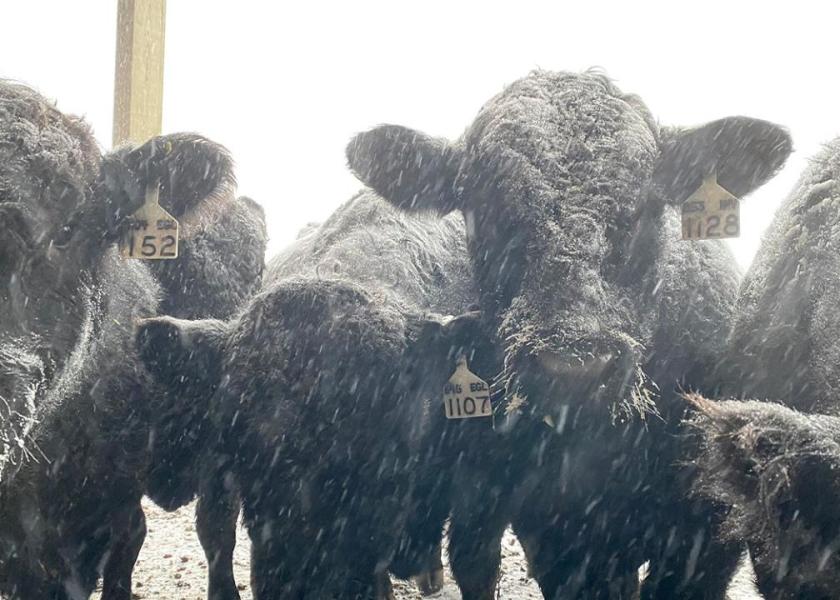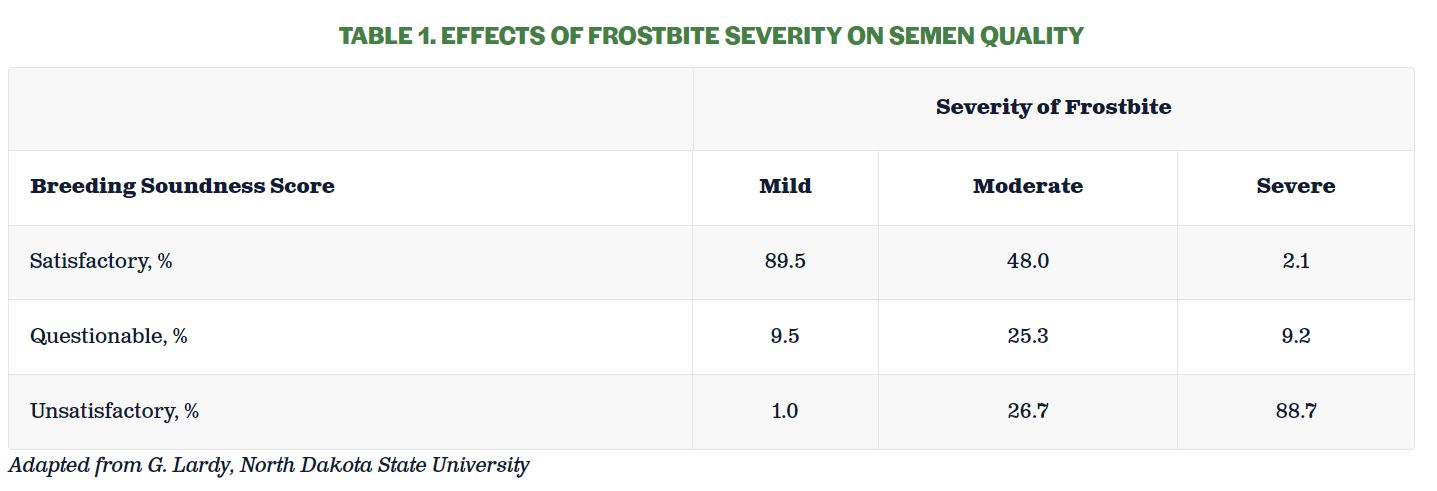Winter Management Strategies of Herd Bulls

Bulls are often a part of the cow herd that slips through the cracks during the winter months as breeding seasons come to a close. All things considered, the working season for a herd bull is relatively short, with an active breeding season of 60 to 90 days for most producers.
When winter weather moves in, and the bulls are pulled from the cow herd, it is imperative to manage herd bulls properly to prevent frostbite of the testes and properly manage body condition score before the next breeding season. Bull management strategies during the winter months can impact a bull’s performance in the upcoming breeding season.
Frostbite
Frostbite presents as a scab, discoloration, and/or sloughing of the bull’s scrotum. These tissue damages limit or prevent the ability for a bull to regulate testis temperature. This is caused by the inhibition of the raising and lowering of the testes that occurs naturally. Come breeding season, this can result in a decrease in fertility.
Dry areas to lay are important to consider when wintering bulls. These areas can be achieved by providing bedding or areas within a pasture that provide adequate cover from wind and snow. Wet and cold conditions increase the risk of frostbite. Table 1 illustrates the effect of frostbite severity of semen quality.
Nutrition
Nutrition of bulls depends on a variety of factors, including age and weight loss that occurred over the breeding season. Mature bulls that are in good condition following breeding season can be managed on pasture or an all-forage diet without supplementation, as long as the forage contains 8 to 10 percent crude protein and is available daily at 2 percent of body weight.
Yearling bulls following their first breeding season are still growing and require more energy and nutrients regardless of condition when compared to mature bulls. A ration developed for young bulls should target an average daily gain of 1.5 to 2.0 pounds dependent on weight lost during the breeding season. A diet crude protein of 10 to 11 percent should be targeted for young bulls. Regardless of diet available and the age of the bull, a good vitamin and mineral program should be followed.
Body Condition Score
At the beginning of the breeding season, ideally bulls should have a body condition score (abbreviated as BCS) of 6. This BCS allows for bulls to lose some weight during the breeding season without negatively impacting sperm quality. It is common for bulls to lose 100 to 200 pounds over the breeding season.
In contrast, over-conditioned bulls are not able to efficiently do their job of breeding cows. At higher body condition scores, fat deposition within the scrotum increases, resulting in poorer thermoregulation of the testes. This reduction in temperature regulation decreases overall sperm quality. To prevent last-minute efforts to improve condition score, producers should evaluate their bull’s BCS 90 to 120 days prior to turnout to provide adequate time to improve or decrease body condition if necessary.
Housing and Exercise
Bulls should be housed in a pen large enough to allow for adequate exercise. Additionally, a large pen allows for the less-dominant bulls to move away from more-dominant bulls. Bulls will fight to determine social ranking; however, providing space for animals to get away from each other may reduce injuries. If bulls are being fed at the same time, 24 to 30 inches of feeder space should be provided per head to allow access for all animals and lessen incidences of fighting.
It is important to provide room for exercise to keep bulls in shape for the next breeding season. If proper exercise is not permitted, bulls can lose their endurance and struggle to keep up in the beginning of the breeding season, resulting in a potential reduction of cows bred during the beginning of the season. Exercise can be encouraged by placing feed and water on opposite ends of the pasture. Ideally, the winter housing area would be located away from cows to allow bulls to fully focus on eating and other behaviors rather than breeding cows.








